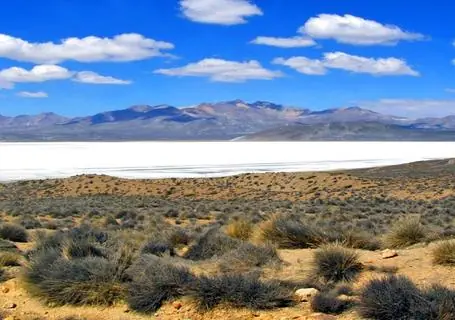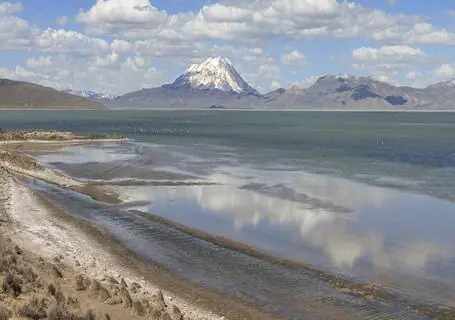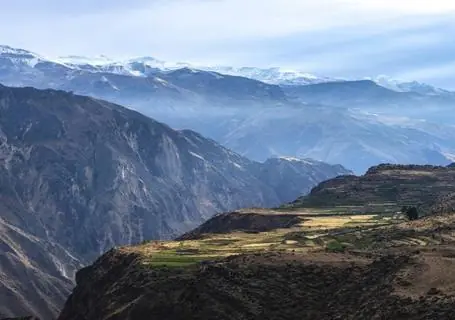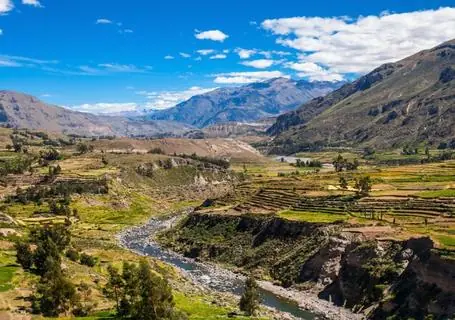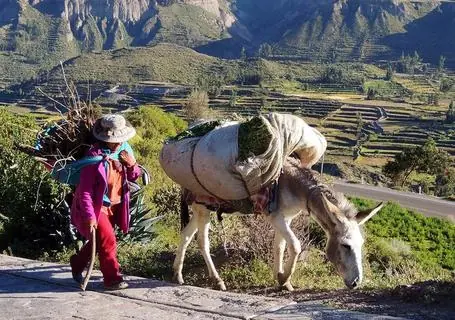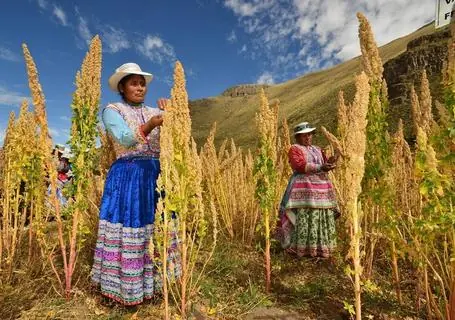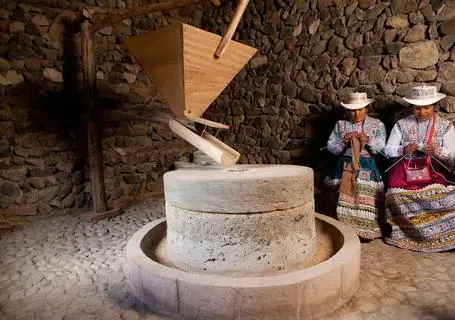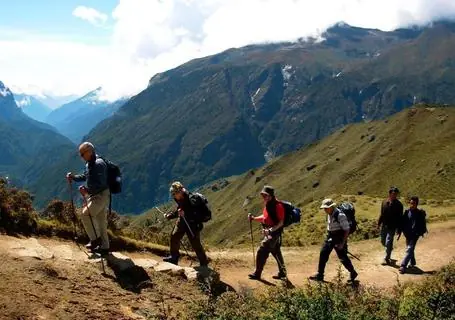Colca Canyon and Andean Culture - 3 Days

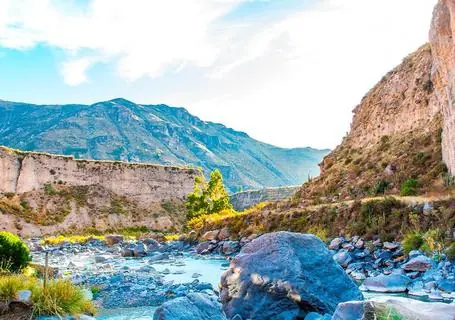
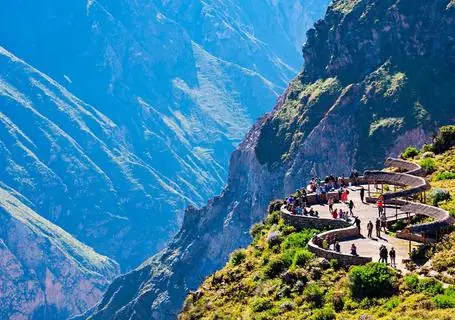
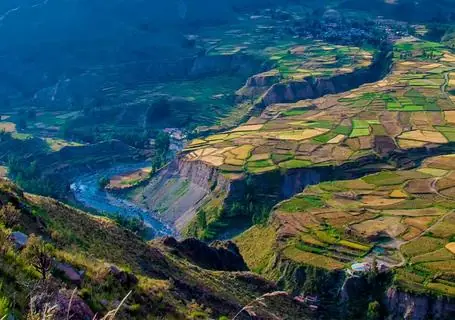
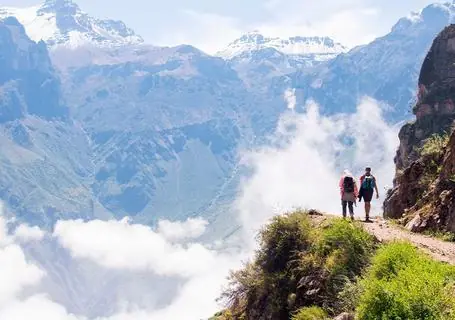
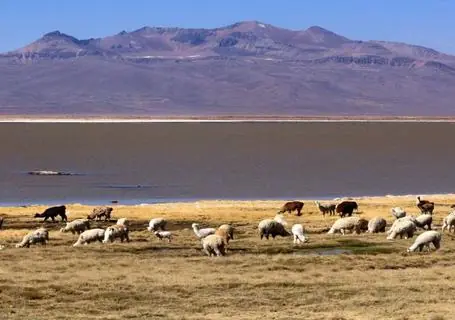
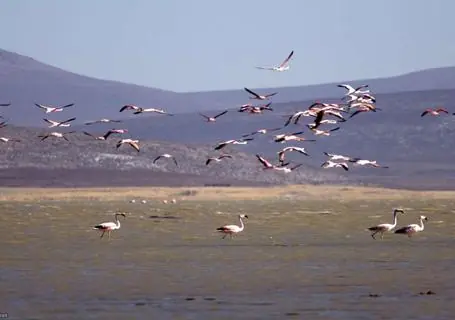 View All PhotosView All Photos
View All PhotosView All PhotosCultural
Easy
Arequipa, Colca Canyon
Nature
| cardinfo-text-5 | ||
| cardinfo-text-7 | Not included | |
| cardinfo-text-8 | cardinfo-not-included | |
cardinfo-text-10
h2-title-1
Colca Canyon is a vast canyon in Southern Peru, close to Arequipa. Reaching a depth of around 3,270 meters (10,730 ft), it ranks among the deepest canyons in the world, along with the nearby Cotahuasi Canyon. To put that into perspective, Colca Canyon is almost twice as deep as the Grand Canyon.
The canyon stretches for 70 KM, and was formed over millennia as the Colca River slowly cut its way through the landscape. It’s a spectacular sight, flanked on one side by Chila Cordillera and on the other by Mount Hualca Hualca, Sabancaya, and the Ampato volcano. In the distance, you can see the active stratovolcano Mount Ubinas and the beautiful Mount Coropuna.
The canyon and the whole Colca Valley area were home to three ethnic groups, the Collaguas, the Cabanas, and the Ccaccatapay, whose descendants still live here today. Settlements here date back to pre-Inca times, with a scattering of towns from the period of Spanish colonization. The region is also home to diverse flora and fauna, most famously the Andean condors, which are the largest flying birds in the world. These giant birds swoop and soar on the thermals rising up along the canyon walls. They share the canyon with kestrels, peregrine falcons, Andean tinamous, and other bird species, making Colca Canyon a paradise for birdwatchers and trekkers alike.
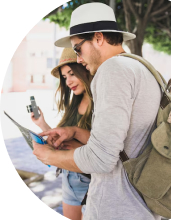 Free Brochure
Free BrochureReady to explore? Download the brochure and start planning!
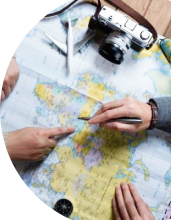
Your FREE travel expert is just a click away
Or Call us now! (888) 803 8004
h2-title-2
Day 1:Arequipa to Colca Canyon
Our first day begins early in the morning as we leave the White City of Arequipa and set off along the route to the Colca Valley. It’s a beautiful drive, passing snow-capped volcanoes, rugged pampas, traditional terraced farms, and picturesque villages where the old traditional ways of life are still very much alive.
We’ll make a few stops along the way, the first at the Aguada Blanca National Reserve, where we can watch innumerable guanacos, alpacas, and vicuñas as they graze on the plains. The reserve, which covers almost 366,936 hectares, was created to preserve the local flora and fauna and their natural environment, which was previously deteriorating at an alarming rate. The reserve also protects the local vicuña population through its repopulation program.
Apart from the vast herds of camelids, the reserve is also home to the southern vizcacha (a large and loveable rodent), foxes, condors, and Andean flamingos (also known as parihuanas). In total, 169 animal species have been identified in the reserve, including 23 mammals and 138 species of birds, such as blue-billed ducks, eagles, and kestrels. During their migration period, flamingos also arrive to spend time wading through Salinas Lake.
Leaving the reserve, we’ll drive around the edge of the Chucura Volcano until we reach the Patapampa Andes viewpoint. We’ll now be at 4,900 meters above sea level, and from here we can look out across the beautiful landscape to the peaks of snow-capped mountains and volcanoes in the Arequipa Region, including Hualca Calca, Sabancaya, and Ampato volcanoes.
Our next stop will be the town of Chivay, where one end of the Colca Valley begins. The traditional terrace systems found here, built by indigenous inhabitants of the area, are remarkable for their scale and precise construction. Chivay itself was founded by the Spanish, a fact reflected in its church and other colonial buildings. You can have a traditional lunch in the town (not included) before we check in to our hotel.
You’ll then have the afternoon to explore the town on your own, and, if you like, visit the hot springs at La Calera, (not included) about 3 km from Chivay. Colca Canyon and the Colca Valley are dotted with natural hot springs and thermal baths, thanks to the seismic activity in the region.
- Meals: Not Included
- Tour Guide: Local Tour guide: (English/Spanish)
- Excursion: Arequipa to Colca Canyon - Shared Service.
- Entrance Fee: Colca Canyon
Day 2:The Home of The Condors!
It’s another early start today, because there’s so much great stuff to see! First, we’ll head to the lookout point known as Cruz del Cóndor ( Condor Cross), near the small villages of Maca and Cabanaconde. Here, strong winds rise up from the canyon, providing a favorite spot for Andean condors. They soar on the thermals, often in pairs, normally in the early morning and late afternoon. There’s a good chance you’ll see these huge condors, with their three-meter wingspans, flying very close to the lookout point, providing a truly majestic sight. From the lookout point you’ll also have incredible views down into the depths of Colca Canyon.
We’ll then head back to Chivay, first stopping off at the traditional village of Pinchollo and the Antahuilque viewpoint. This viewpoint (or mirador, as they are known in Spanish) offers wonderful views of the 1,500-year-old agricultural terraces that curve along the hillsides like an amphitheater. You can also spot some of the enchanting lagoons of the Colca Valley.
Next is the lookout point of Choquetico, where we can see two very interesting features. First are the hanging tombs, or tumbas colgantes, built by the Aymara-speaking Collaguas around 1200 AD. These funerary niches were cut into the cliffs of Cerro Cabanaconde and then sealed off with rock walls. In order to reach these otherwise inaccessible cliff faces, the builders likely worked their way down using ropes suspended from trees up above. The second interesting feature we can see here is the litomaqueta, a model of the canyon terraces carved into a rock.
Moving on, we’ll visit the small Andean village of Maca, which sits on the lower slopes of Sabancaya Volcano and Nevado Hualca Hualca. Then we’ll pay a visit to the village of Yanque, which is home to a pretty white church, a small archaeology museum, and thermal baths down by the river. If you’re feeling adventurous, there are horse-riding facilities and mountain bike rentals available in Yanque. Once we get back to Chivay you’ll have time to unwind or continue exploring the town. Activities such as hiking, horse riding, and biking can be arranged here.
*These activities are not included in our tour, but we’ll happily help you arrange them.
- Meals: Not Included
- Tour Guide: Local Tour Guide: English/Spanish
- Excursion: Visit Condor Cross - Shared Service
Day 3:Immersive Cultural Experience at Coporaque
After an early breakfast at your hotel, a villager from nearby Coporaque will take you to his home for a day of cultural immersion, so you can get a feel for the traditional way of life in this part of Peru. Coporaque is a small village a short distance from Chivay, down an unpaved road. The village sits near the Colca River and is surrounded by a pretty of hills covered with agricultural terraces, some of which date back to the Incas. The green terraces are filled with crops and grazing cattle. The village has remained largely isolated from the modern world and most of the locals still dress in the traditional, colorful fashion of their ancestors. The village has only recently received electricity and proper piping to carry water down from the mountains above. Visiting Coporaque is a form of sustainable tourism with great benefits to the local community, and provides a fascinating insight for visiting tourists.
Once you arrive at the villager’s home you’ll sit with him as he lays out the plan for the morning – and then he’ll put you to work! But don’t worry, it will be interesting and fun, we promise! We can’t say precisely what the work will be, as it depends on the season and the day. But normal activities include working in the fields, herding animals, and preparing the land for sowing or harvesting, all in the traditional Andean way. And, of course, it’s a great chance to interact with the locals. They won’t speak English, so be prepared to use some Spanish or communicate with gestures and smiles.
It is also possible to go trekking to the Ruins of San Antonio. It takes approximately an hour.
Around 13h00 we will begin our drive back to Arequipa (or Puno, if you choose that option).
- Meals: Not Included
- Tour Guide: Local Tour Guide: English /Spanish
- Transfer: Colca - Arequipa or Puno - Shared Service (4-5 Hours Approx).
h2-title-3
calendar-consult-us
h2-title-4
whats-included-title
- Transport: (Shared).
- Pick-up from your hotel in Arequipa.
- Your Journeys Highlight Moment: Colca Canyon, Condor Cross, Coporaque cultural immersion.
- Colca Canyon entrance fee.
- First aid kit, if you are taking any medications, please bring your prescription with you.
- Professional Guided Tour ENG/SPA.
whats-not-included-title
- Medical and emergency evacuation insurance.
- Trip cancellation insurance or any other travel insurance.
- Any activity not described in What's Included.
- Meals not described on the itinerary.
- Tips/Gratuities
h2-title-5

specialist-box-title
Natividad Cortez
specialist-box-phrase
top-tours-title
top-tours-info
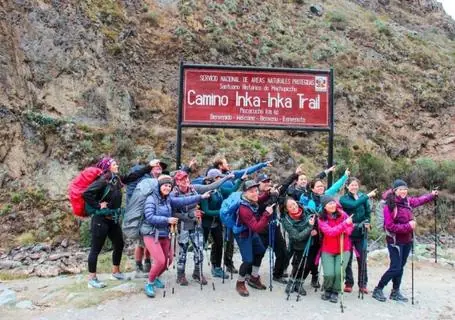
Trek Along the Inca Trail To Machu Picchu
7daysTrek Along The Inca Trail To Machu Picchu with Valencia Travel. We are a renowned Peruvian tour company offering trekking experiences throughout Peru.
card-type-tagAdventure
card-activity-tagModerate - Demanding

Classic Peru Trip
7daysValencia Travel's classic Peru trip is a bucket-list adventure. This 7 Day trip will take you on unforgettable experiences throughout the Peruvian heartland.
card-type-tagCultural, Gastronomy
card-activity-tagEasy
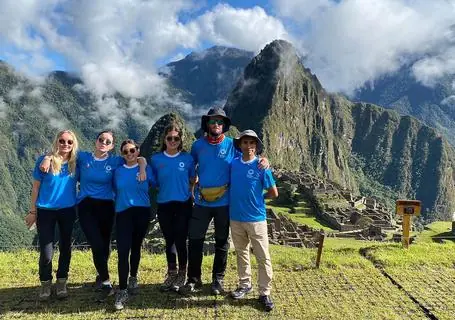
Classic Inca Trail
4daysThe Inca Trail trek to Machu Picchu is the ultimate bucket list hiking experience! Join us on this Classic 4 Day & 3 night Inca Trail Hike!
card-type-tagAdventure
card-activity-tagModerate - Demanding
asso-info-title
asso-info-description
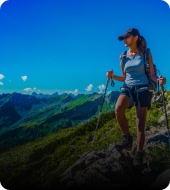 Aventure
Aventure
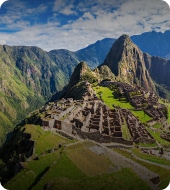 Cultural
Cultural
 Gastronomy
Gastronomy
 Wellness
Wellness
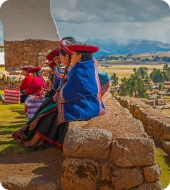 Local Living
Local Living
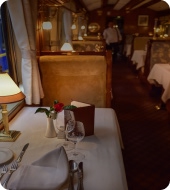 Luxury
Luxury
